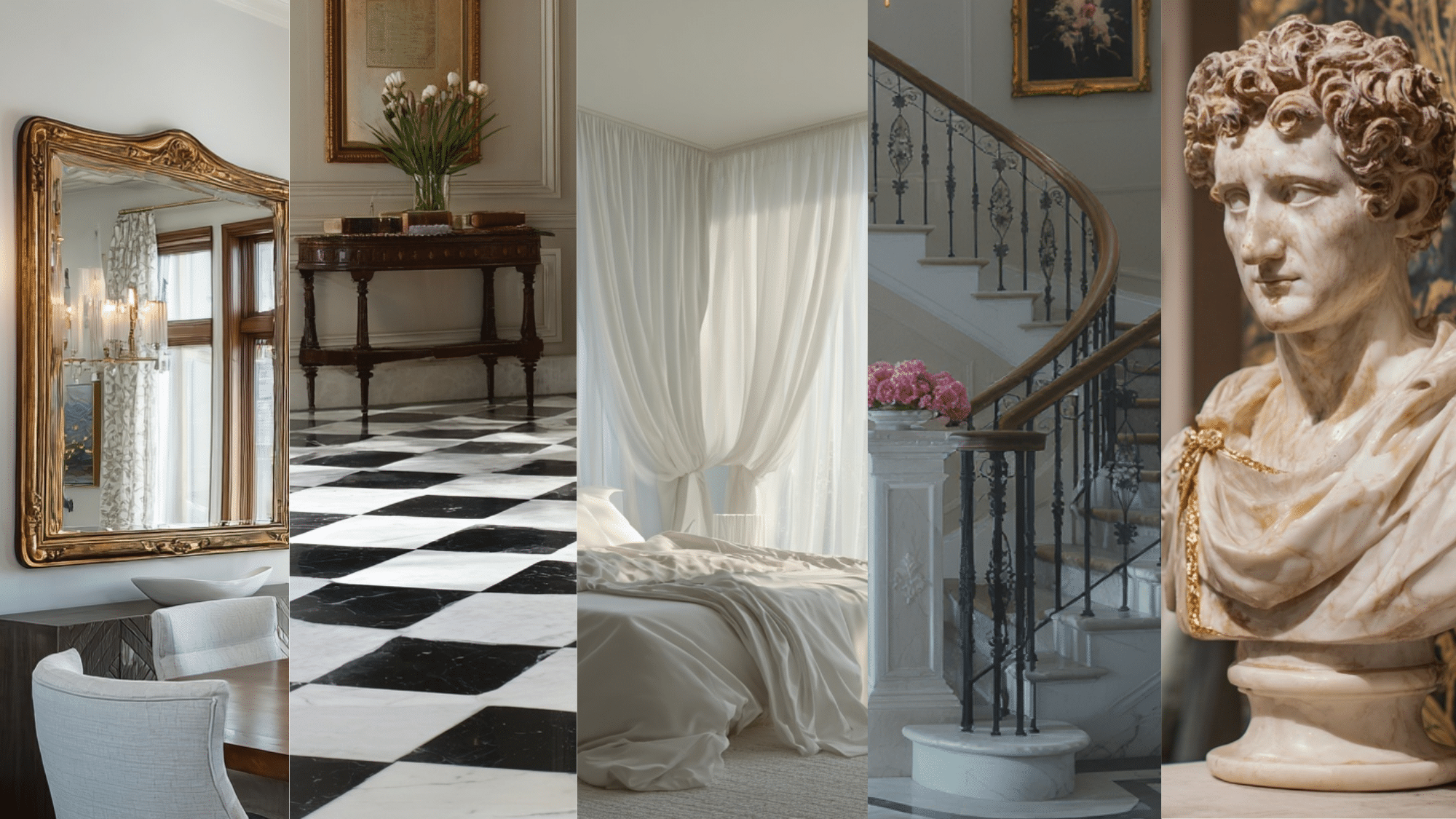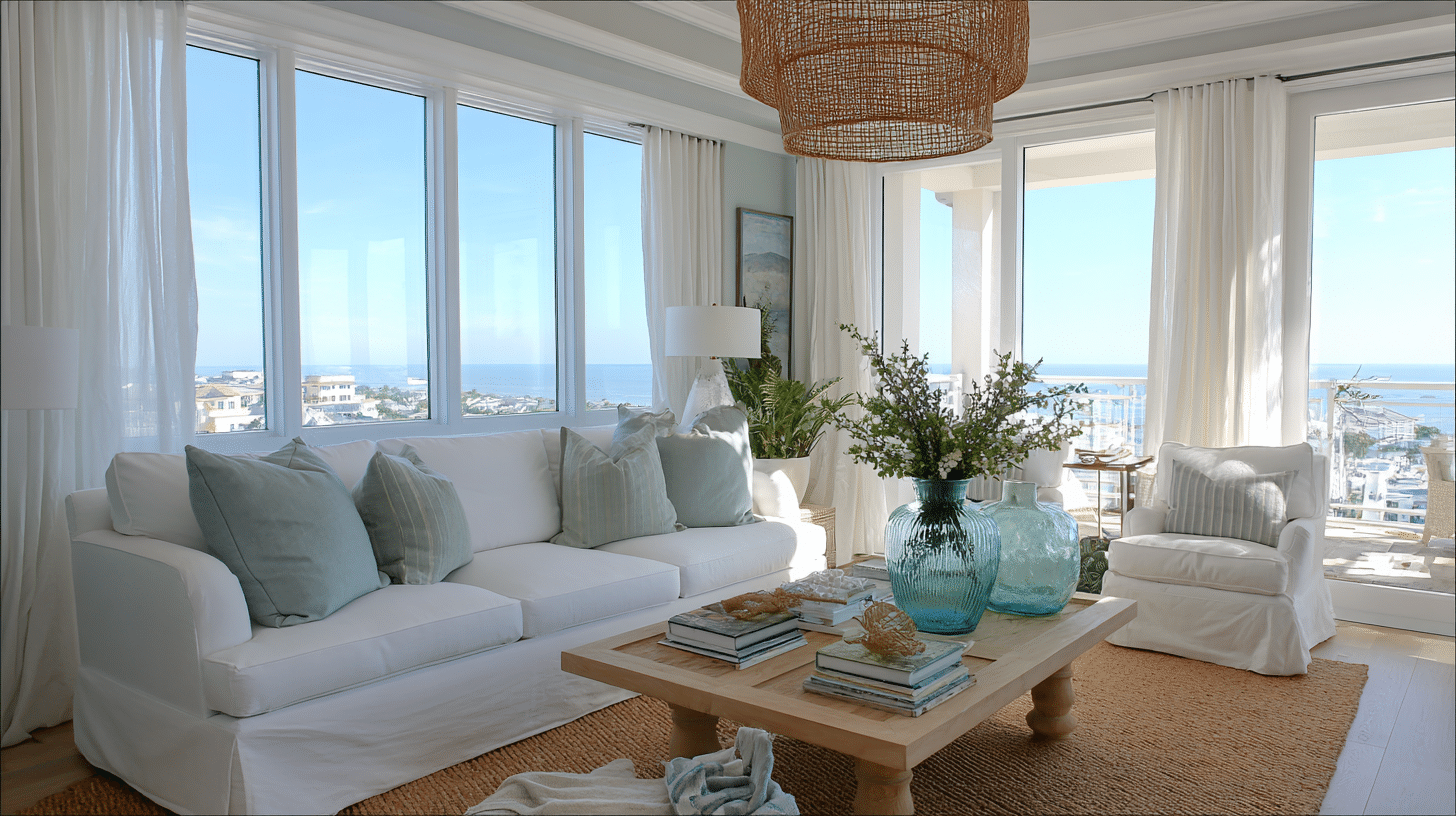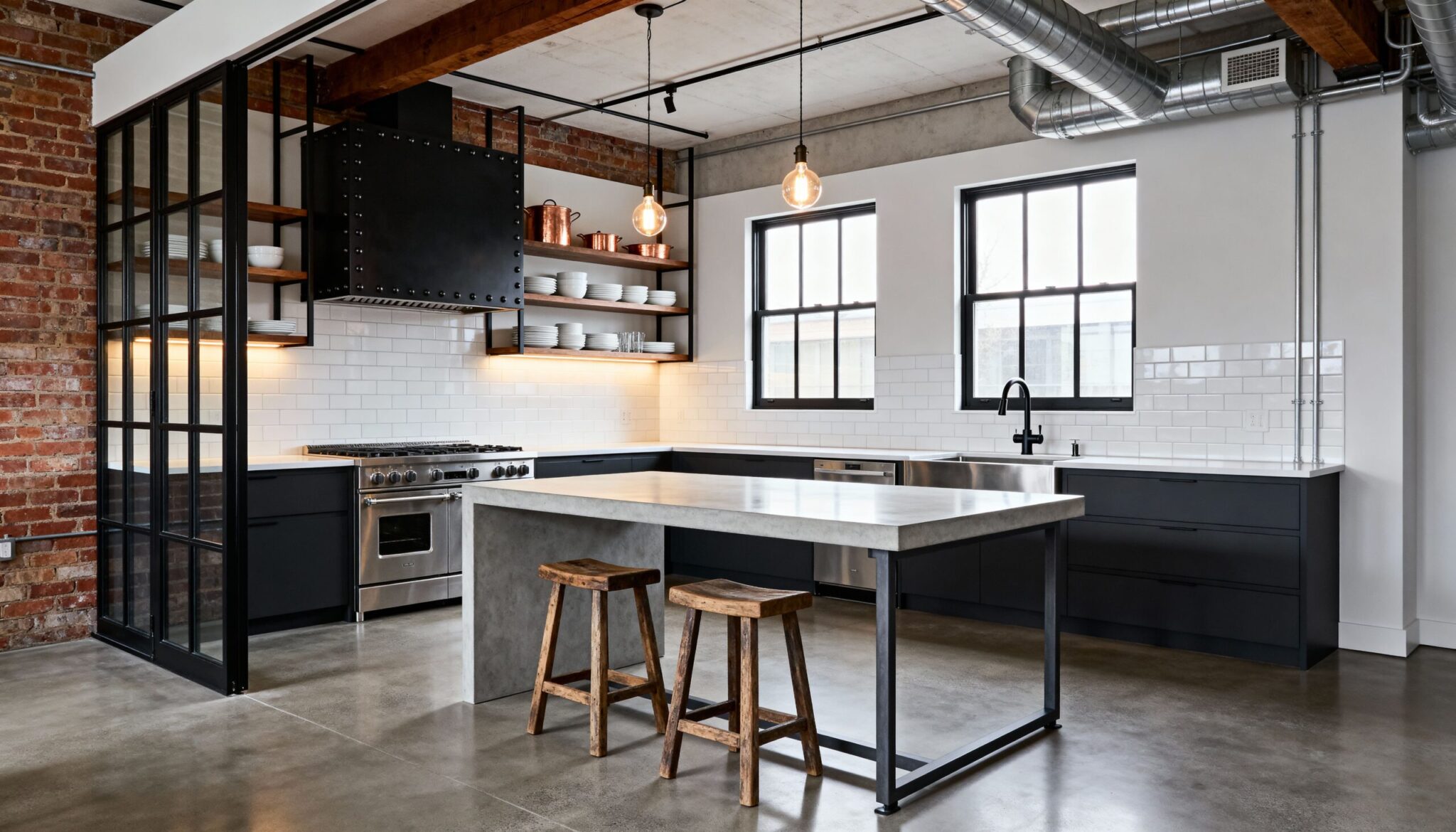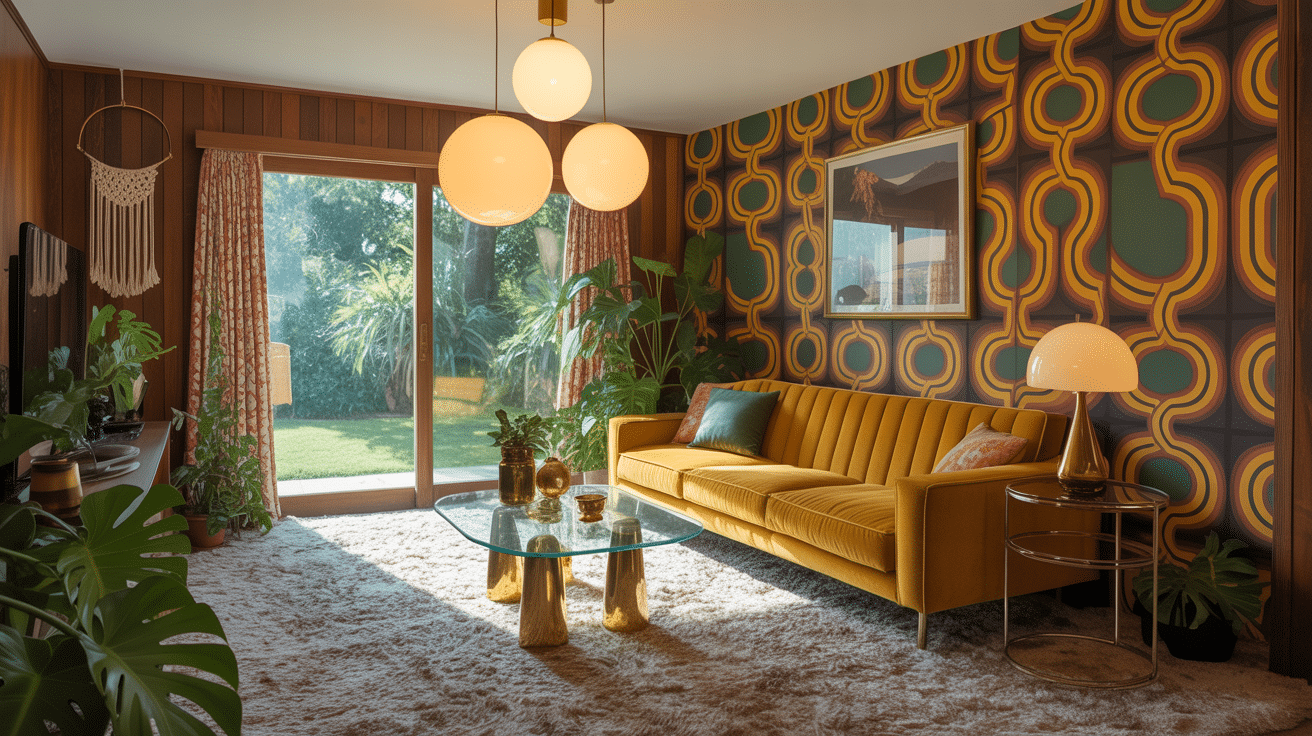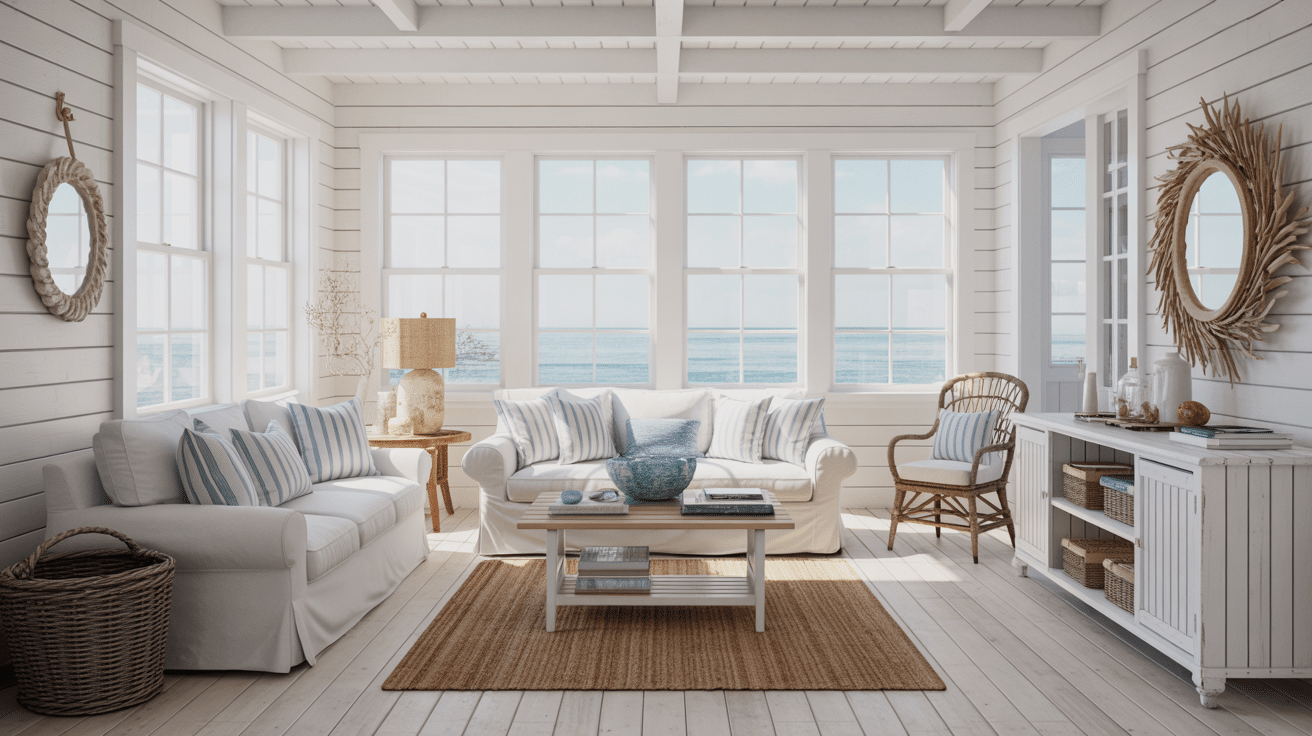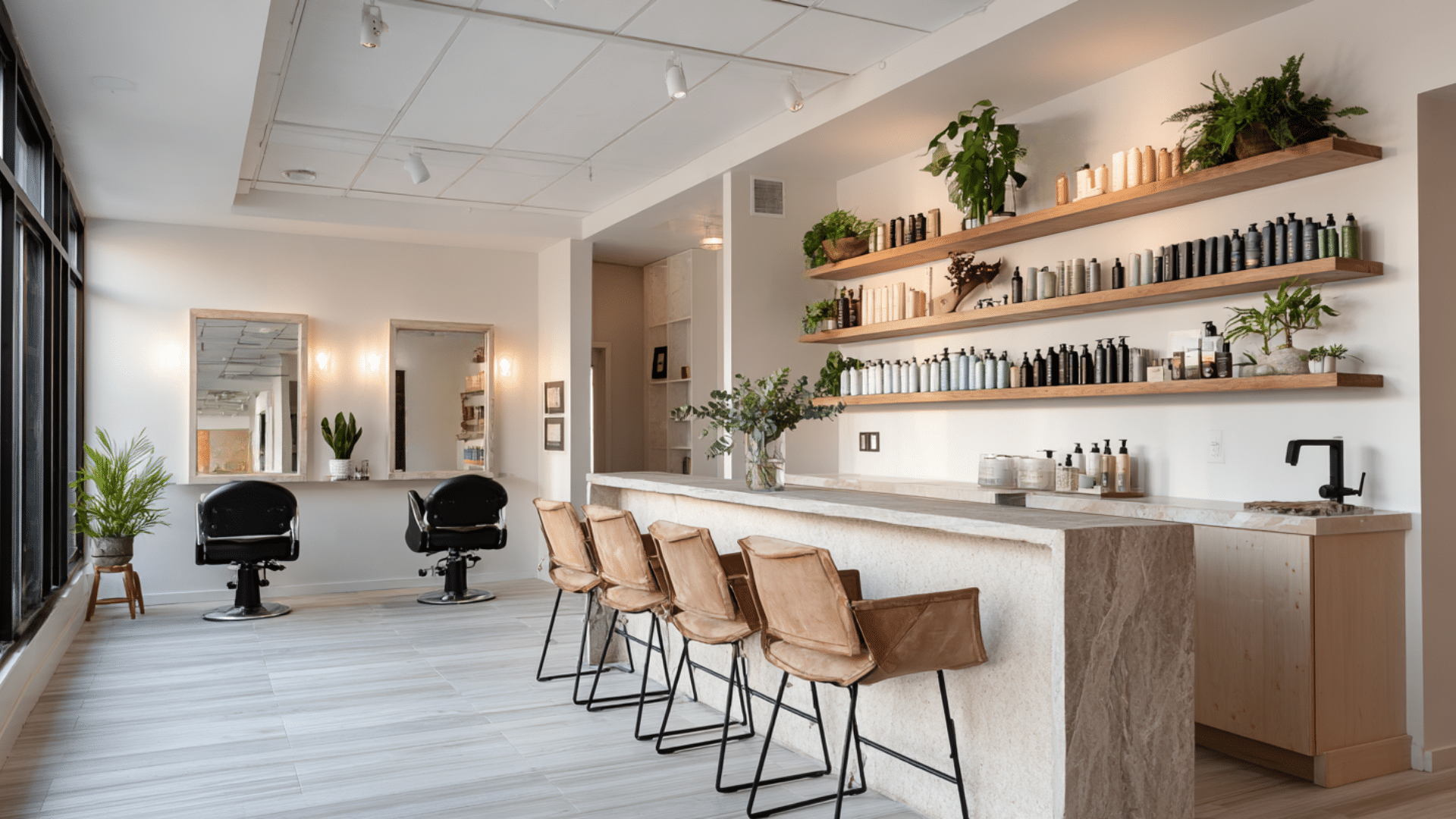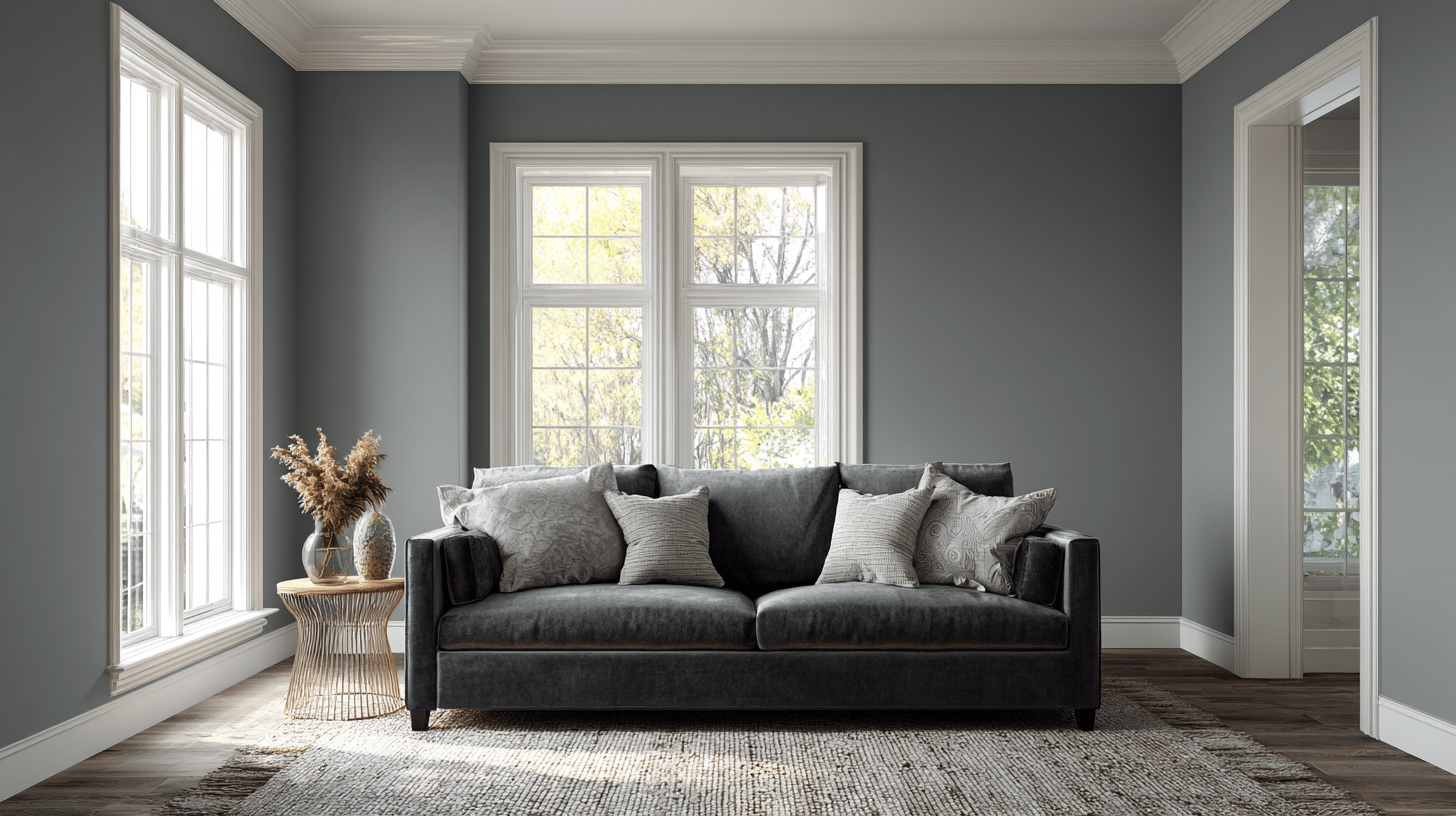Neoclassical Design and Its Characteristics
Neoclassical design draws inspiration from ancient Greek and Roman architecture.
This style came up in the 18th century as a response to the ornate Baroque period. It focuses on simplicity, symmetry, and classical proportions.
The characteristics are easy to spot. Columns, arches, and pediments appear throughout the space. Color palettes tend to be neutral, featuring whites, creams, and soft grays. The furniture features straight lines and minimal ornamentation.
Neoclassical interiors feel balanced and orderly.
The rooms often have high ceilings with decorative moldings. Gold accents appear sparingly to complement the understated design.
This style creates a sense of grandeur while maintaining restraint and refinement. The overall effect is one of calm and dignity.
Color Palettes, Materials, and Textures
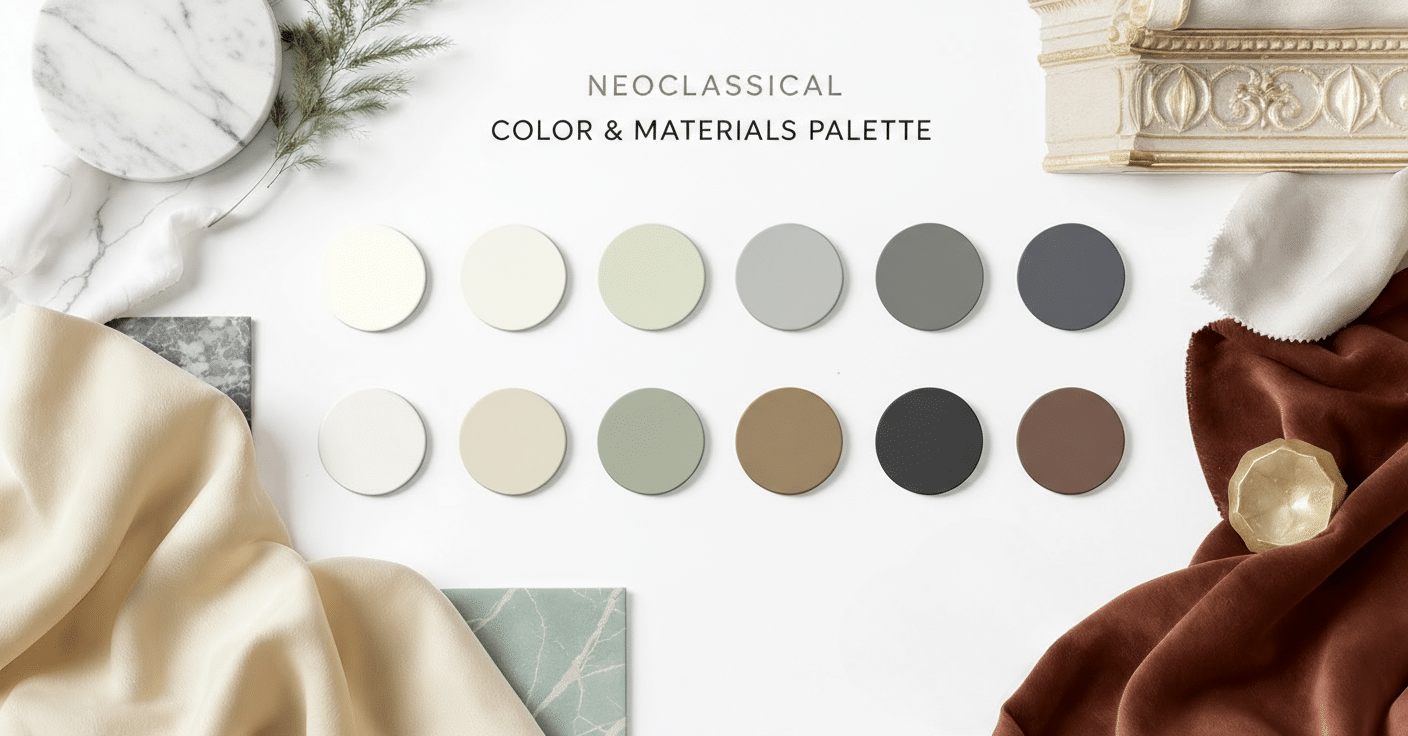
Neoclassical color schemes remain subdued and advanced.
White serves as the primary choice for walls and ceilings. Soft grays, beiges, and ivory tones create a calm backdrop. Pale blues and greens occasionally appear as accent colors.
The materials reflect luxury and quality. Marble stands out as the most popular choice for floors and surfaces. Polished wood adds richness to furniture pieces. Silk and velvet fabrics cover seating and drapes.
Textures play an essential role in this style. Smooth plaster walls contrast with carved wooden details. Glossy finishes on furniture catch the light beautifully. Stone surfaces provide a calm, solid feel.
Metal accents in bronze or gold add visual interest. Crystal chandeliers introduce sparkle to the space. These elements work together to create refined interiors.
Room-By-Room Guide to Neoclassical Interior Design
Neoclassical design works gorgeously in every room of the home. Each space offers unique opportunities to incorporate classical elements.
The key is to maintain balance and restraint throughout the whole process.
Living Room
The living room sets the tone for the Neoclassical style. It’s where classical architecture and comfortable seating come together.
1. Install Fluted Columns or Pilasters
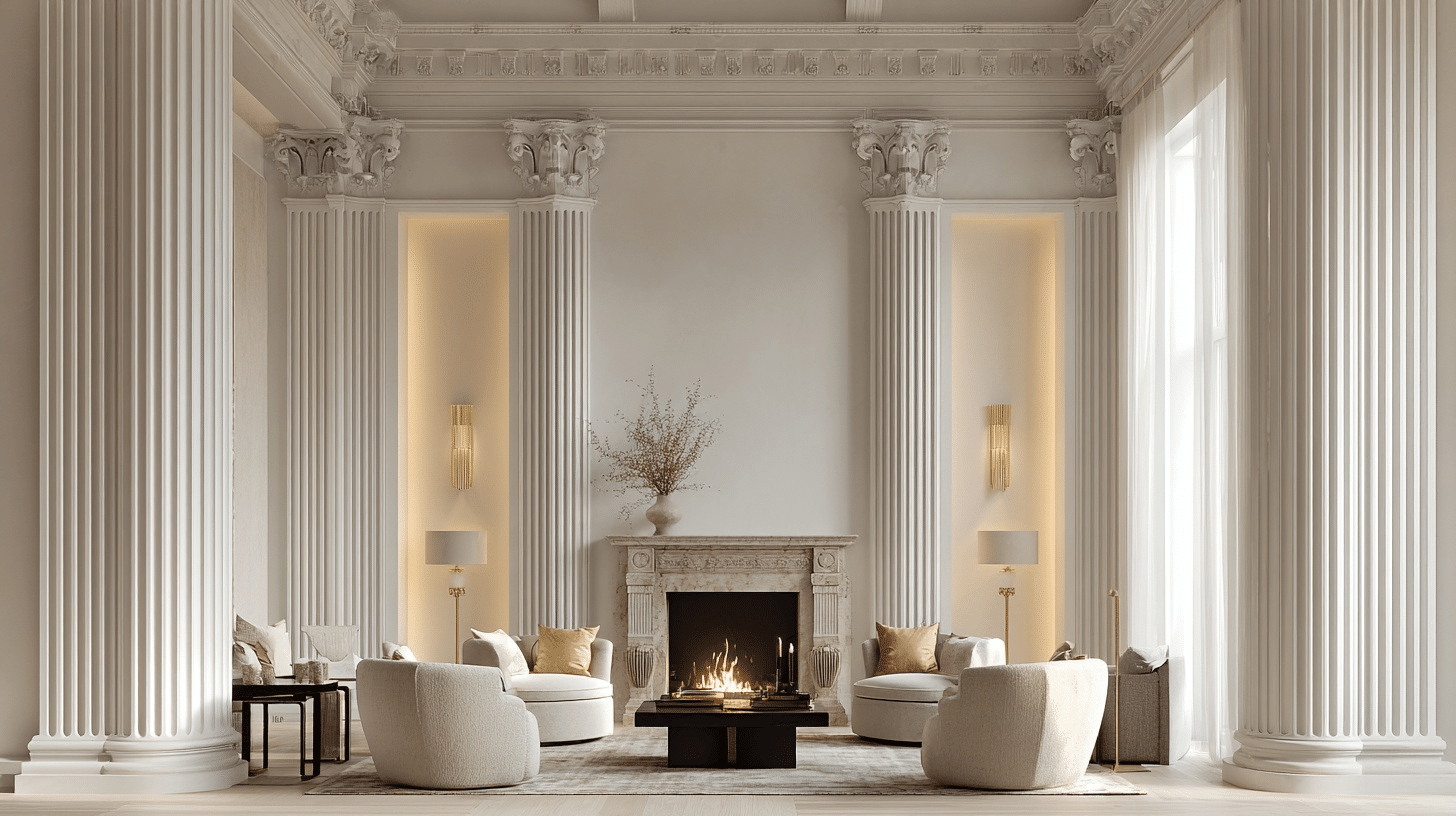
Add fluted columns at room corners or flanking doorways. These vertical elements create height and classical structure. Choose painted wood or plaster for an original look.
Position them to frame seating areas or architectural features.
2. Use Symmetrical Furniture Arrangement
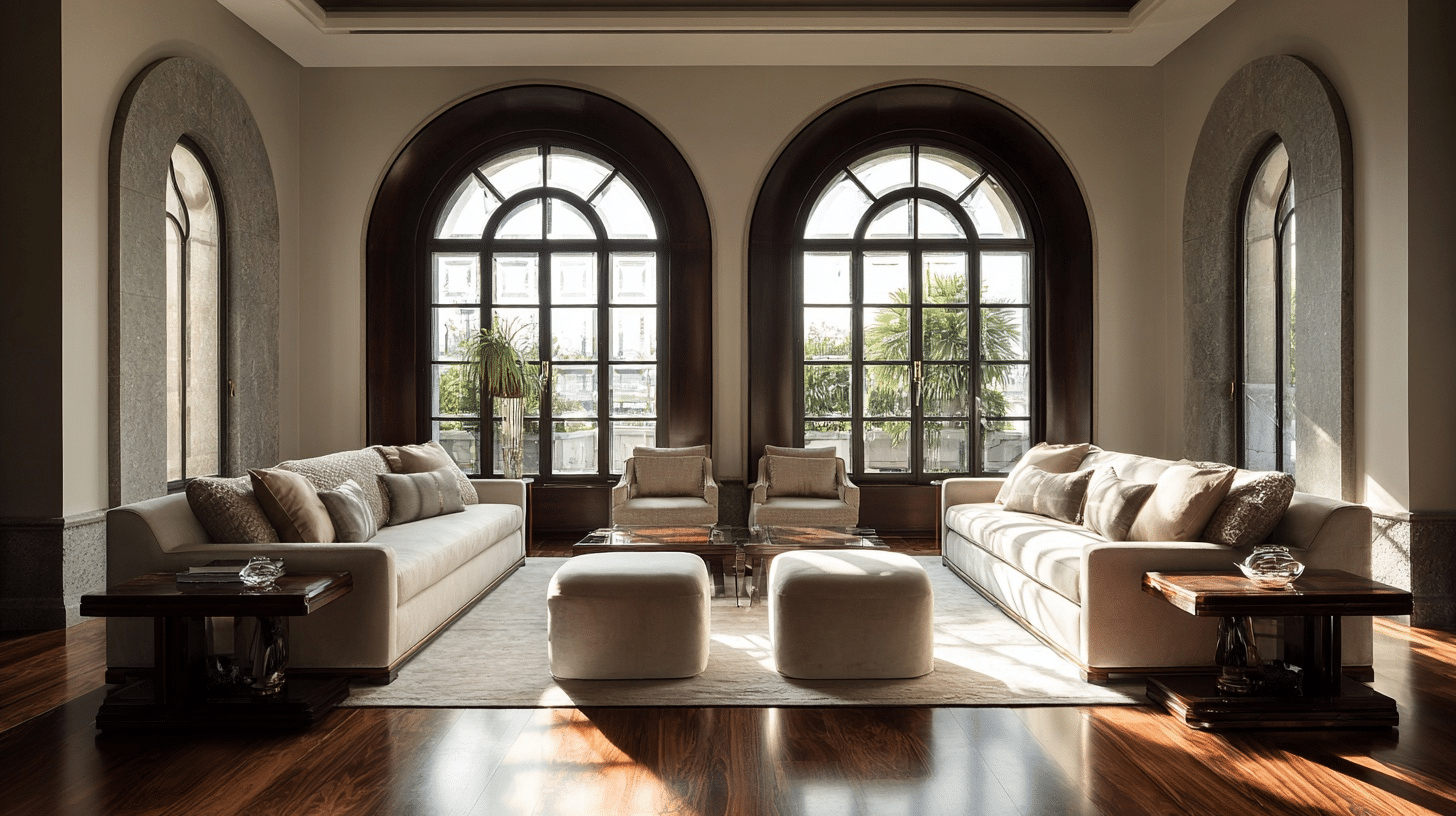
Place matching sofas or chairs opposite each other. Center the arrangement around a fireplace or large window. This creates visual balance and order. Keep pathways clear and equal on both sides.
3. Add Crown Molding and Ceiling Medallions
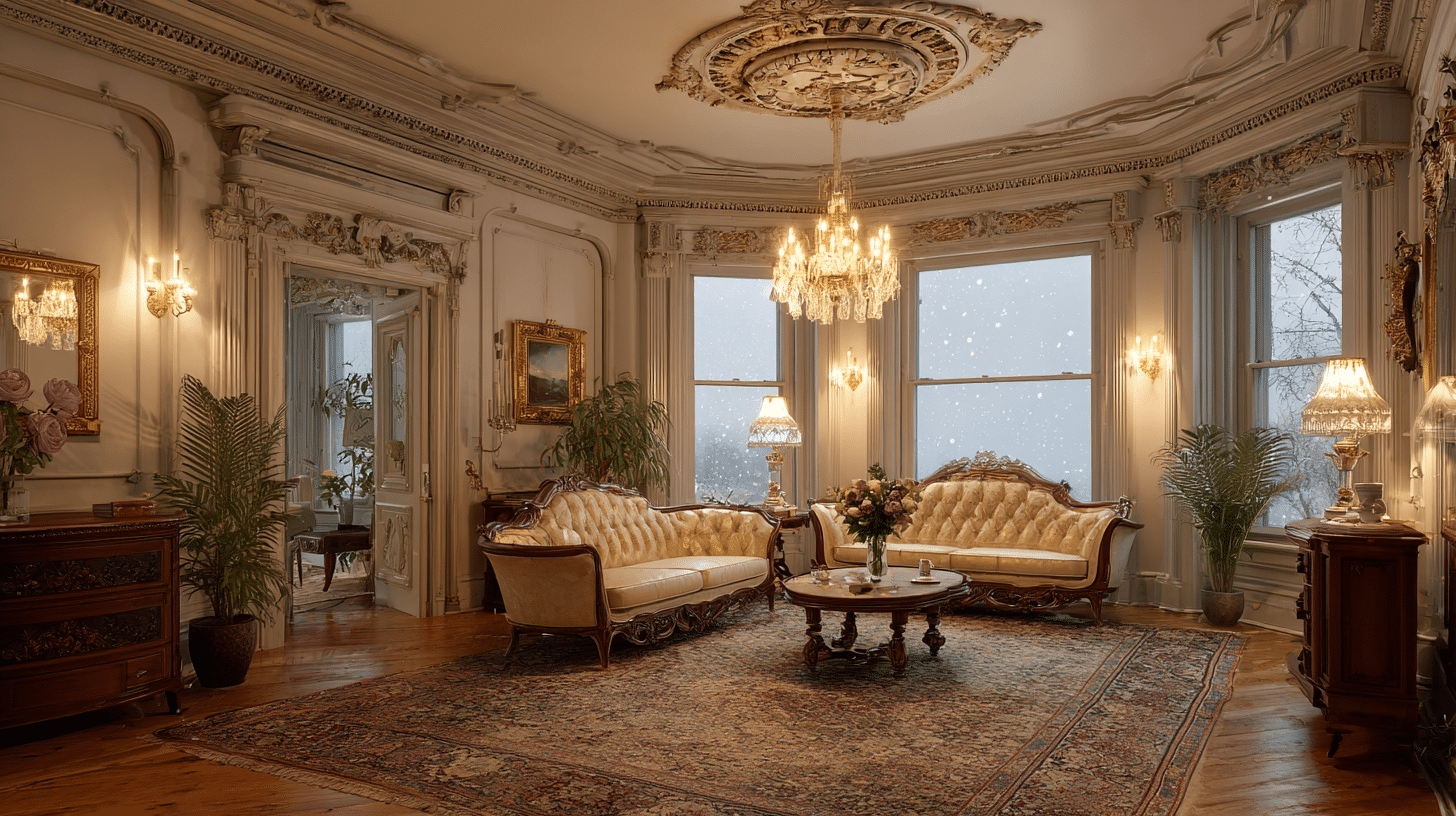
Install detailed crown molding where walls meet the ceiling.
Place a decorative medallion around the chandelier. These architectural details define the space. Paint them white or cream to match the ceiling.
4. Choose Low-Profile Furniture with Straight Lines
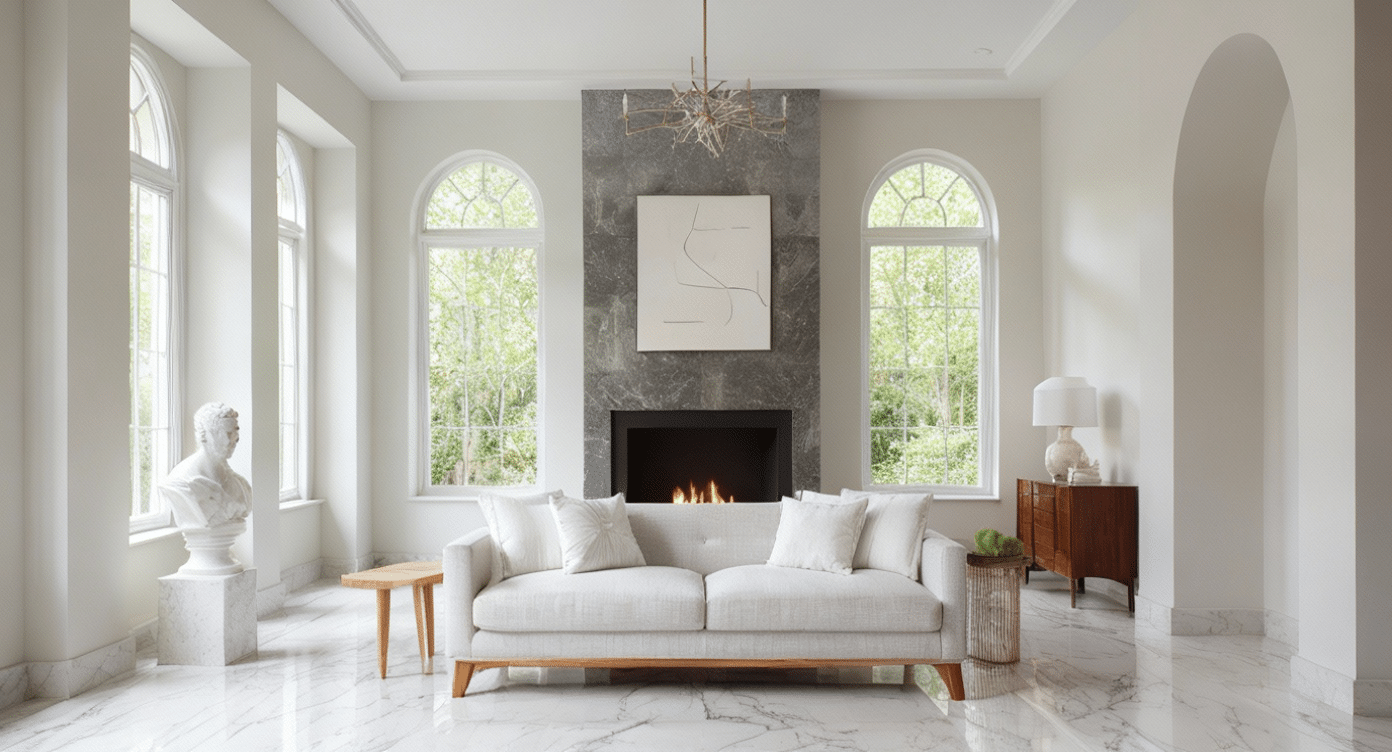
Select sofas and chairs with exposed wooden legs. Look for pieces with minimal curves and clean edges.
Upholster them in solid neutral fabrics. Avoid bulky or overstuffed designs.
5. Display Classical Art and Sculptures
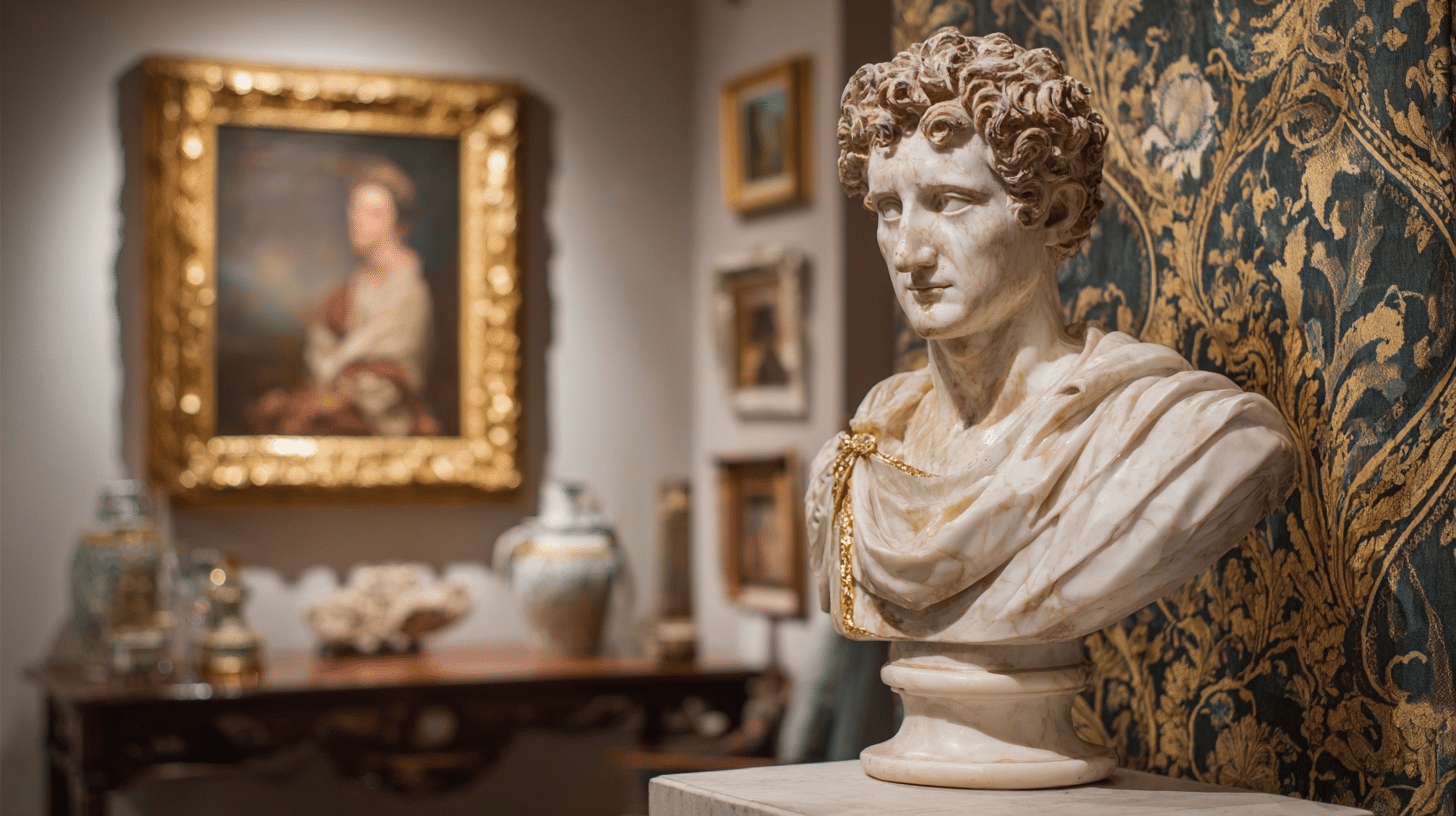
Hang paintings with Greek or Roman themes. Place marble busts on pedestals or side tables. Frame artwork in simple gold or black frames. Keep the display organized and intentional.
Bedroom
The bedroom becomes a peaceful retreat with a touch of Neoclassical elements. Simple lines and quality materials create a restful atmosphere.
6. Select a Four-Poster Bed with Classical Details
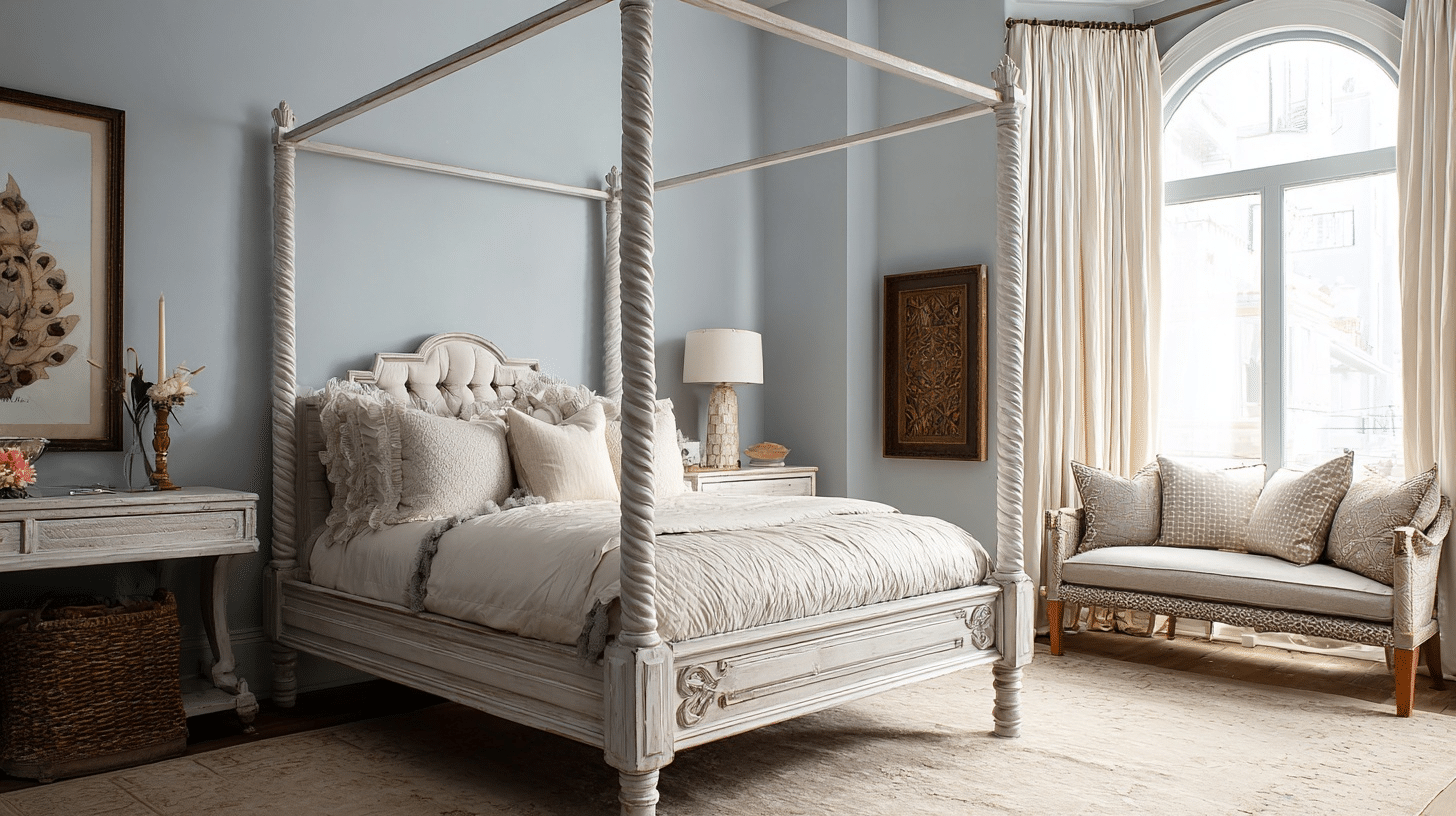
Choose a bed frame with straight posts and minimal carving. Look for Greek key patterns or fluted details. Keep the design simple rather than ornate. Use white or natural wood finishes.
7. Layer Neutral Bedding in Quality Fabrics
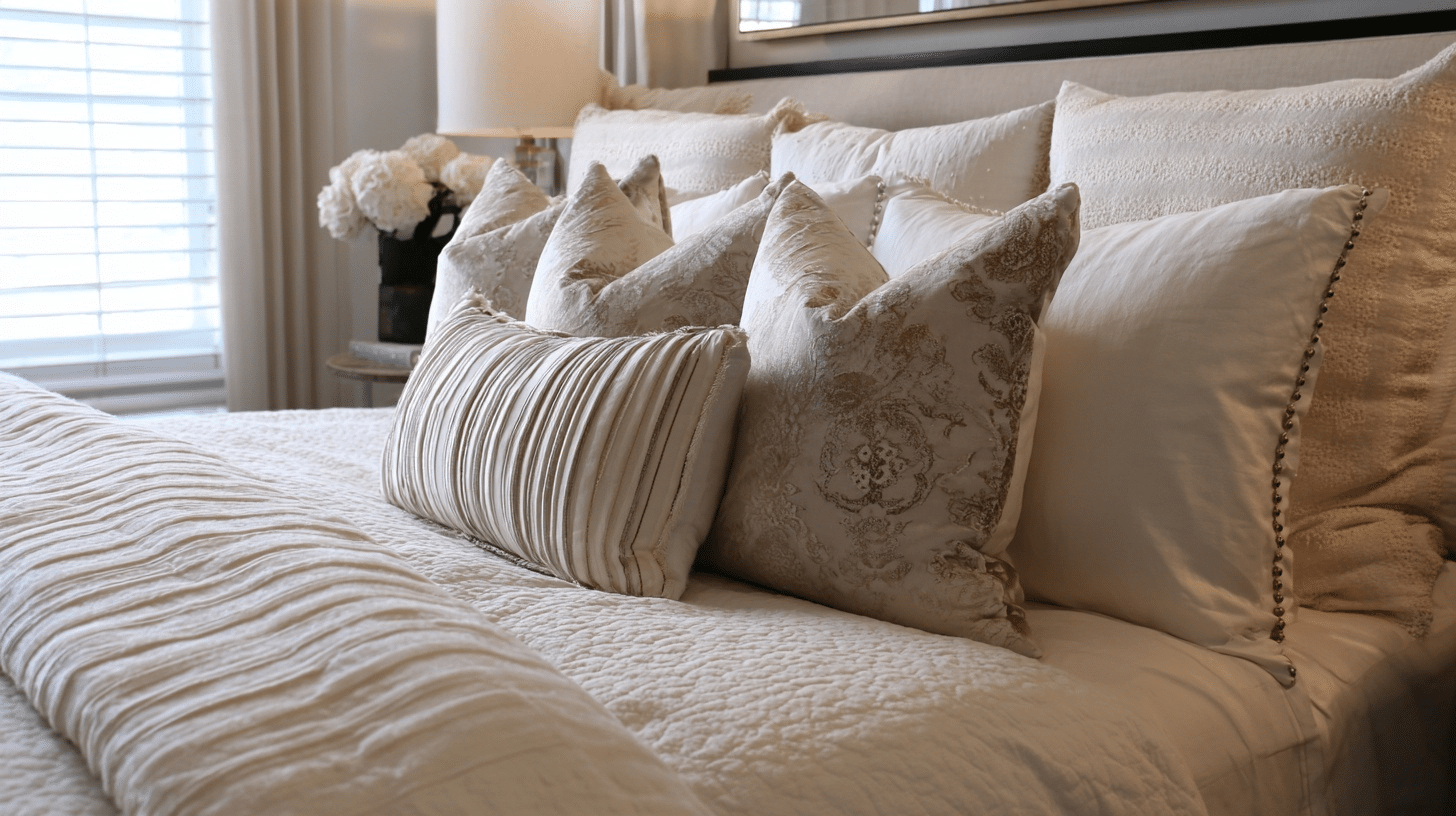
Start with crisp white sheets in high thread count cotton. Add a coverlet in cream or soft gray. Layer with silk or velvet throw pillows. Keep patterns minimal or geometric.
8. Install Sconces on Either Side of the Bed
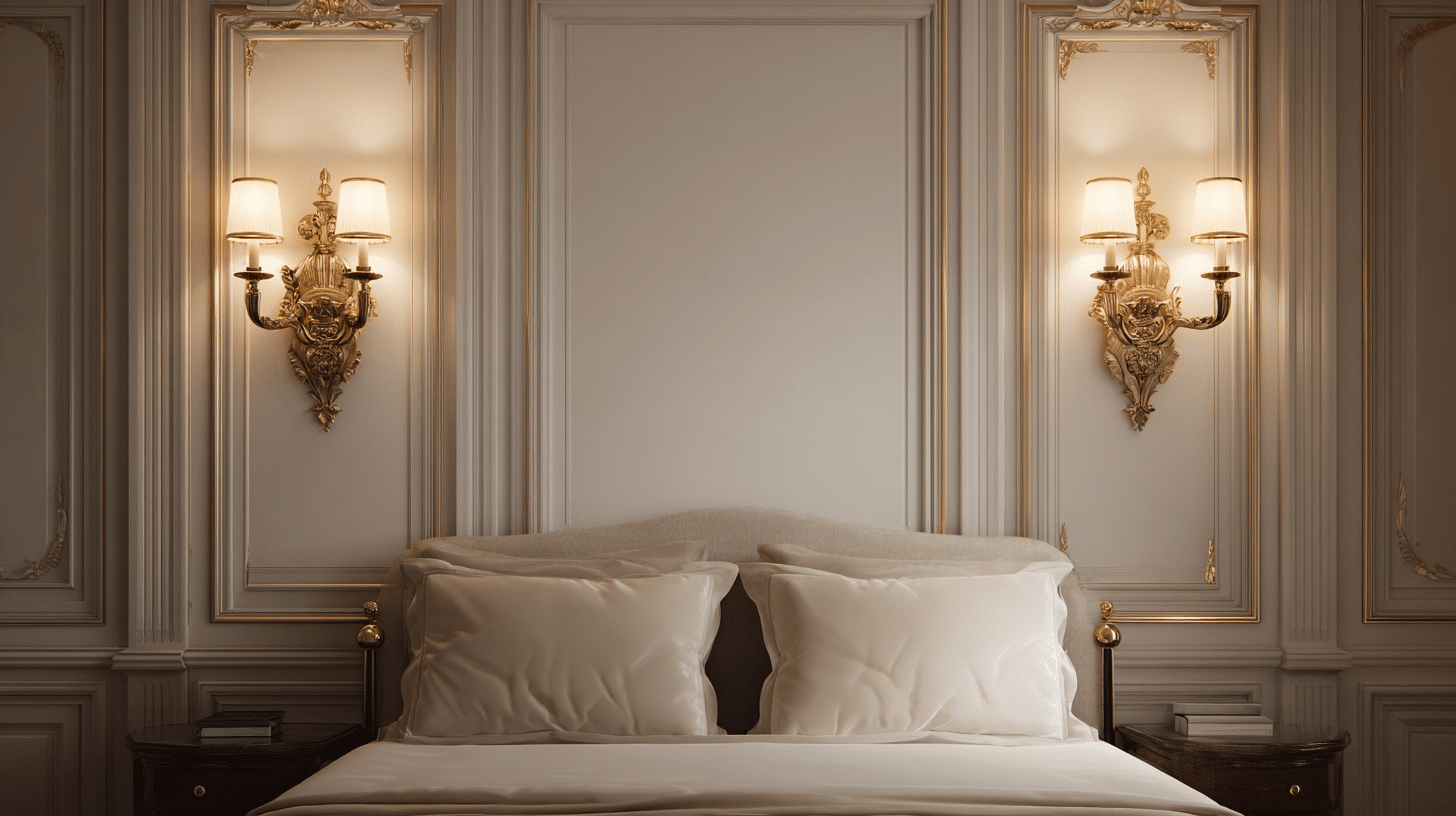
Mount matching wall sconces for a symmetrical lighting effect. Choose designs with classical motifs. Position them at equal heights. Use warm bulbs for a soft glow.
9. Add a Chaise Lounge or Upholstered Bench
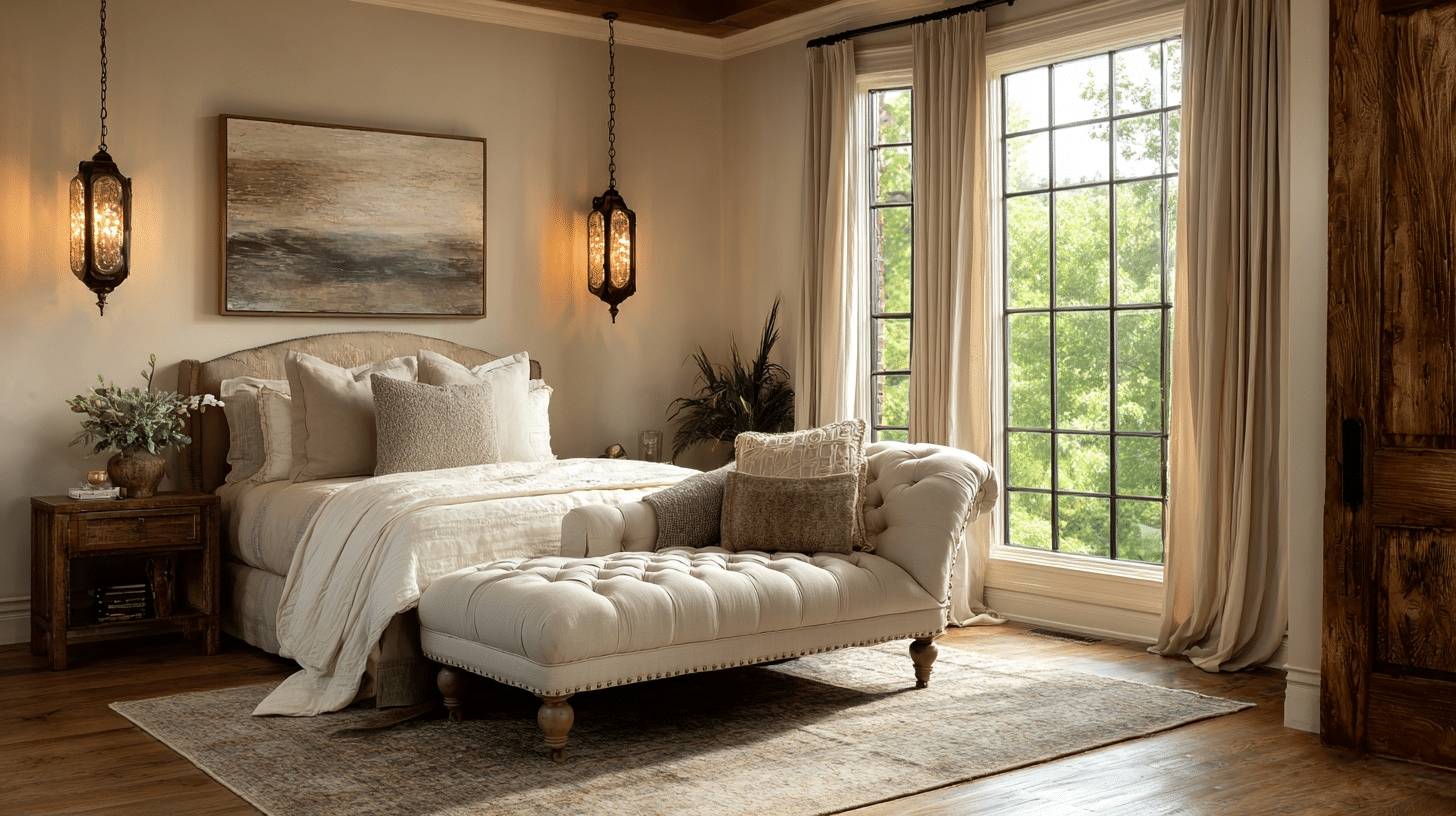
Place a classical-style chaise at the foot of the bed. Select one with exposed wooden legs and simple lines. Upholster it in a complementary neutral tone.
This adds seating without cluttering the space.
10. Use Sheer Drapes in Floor-Length Panels
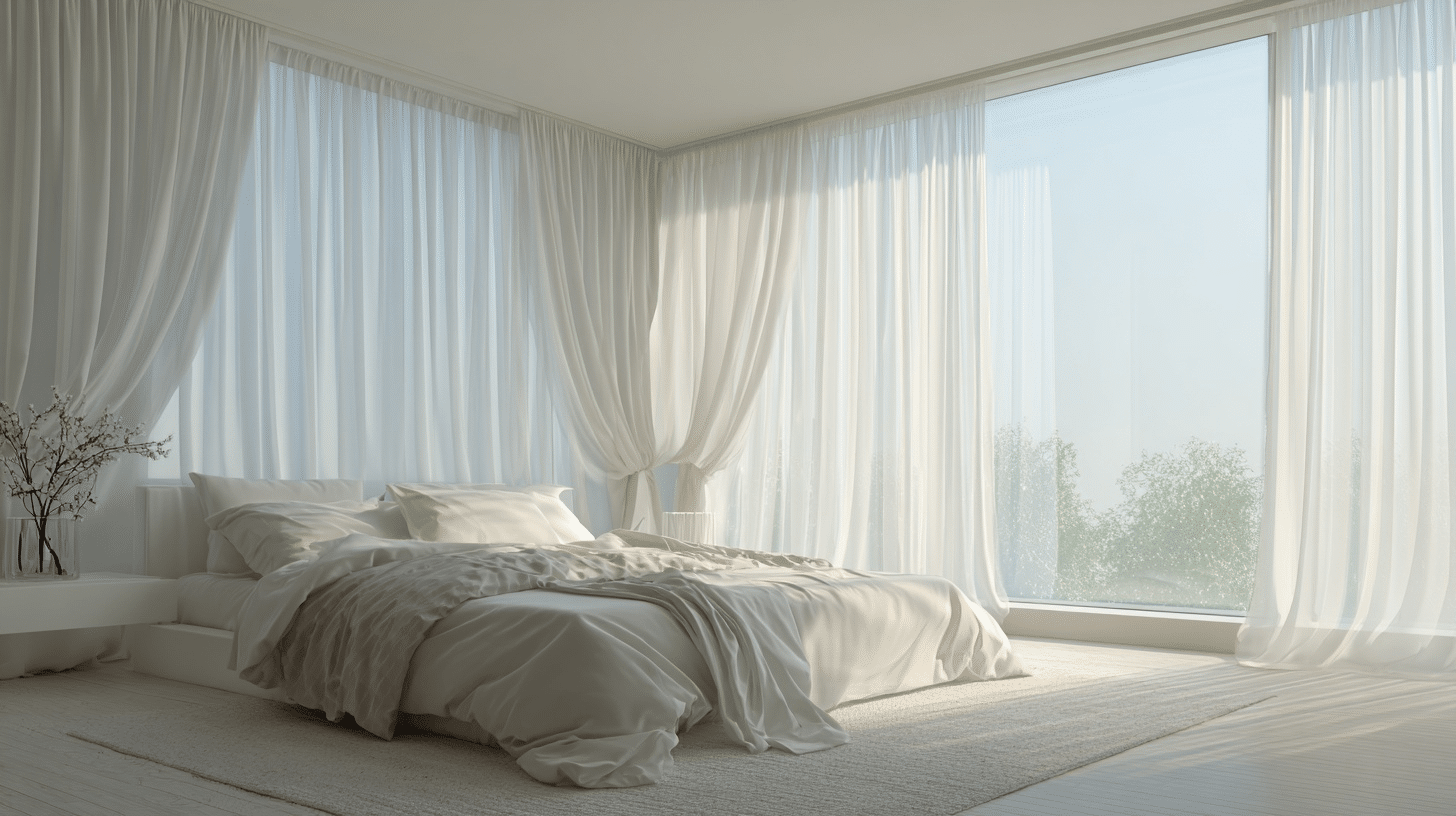
Hang white or ivory curtains from the ceiling to the floor. Choose lightweight fabrics that filter natural light. Mount them on simple rods with classical finials. Keep the draping straight and clean.
Dining Room
The dining room showcases the finest example of formal Neoclassical interior design. Here, symmetry and refinement take the center stage.
11. Center a Crystal Chandelier Above the Table
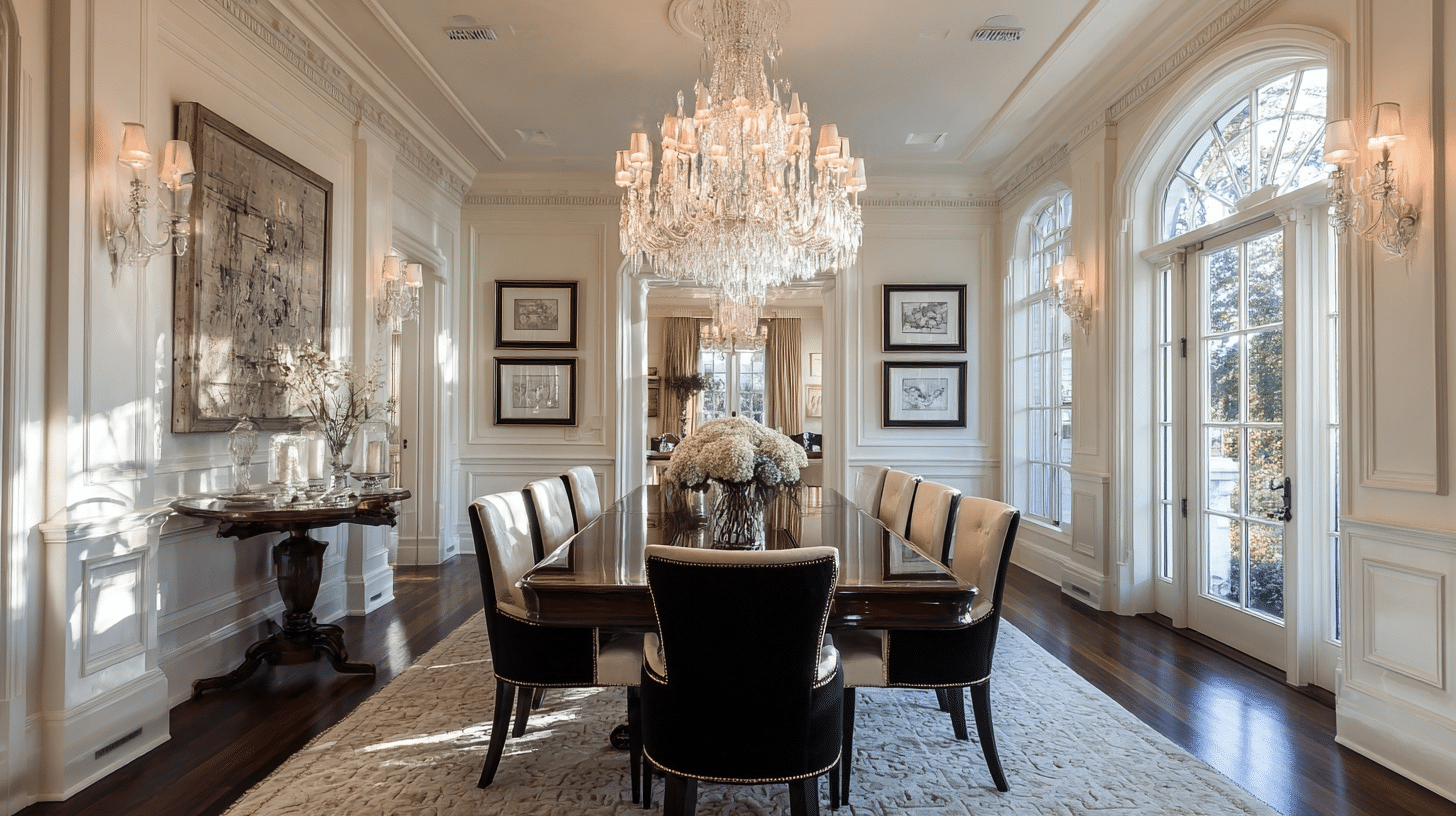
Install a multi-tiered chandelier as the centerpiece of the room. Choose one with crystal drops and metal arms. Hang it 30-36 inches above the table surface. Ensure it provides adequate lighting.
12. Use a Rectangular Dining Table in Dark Wood
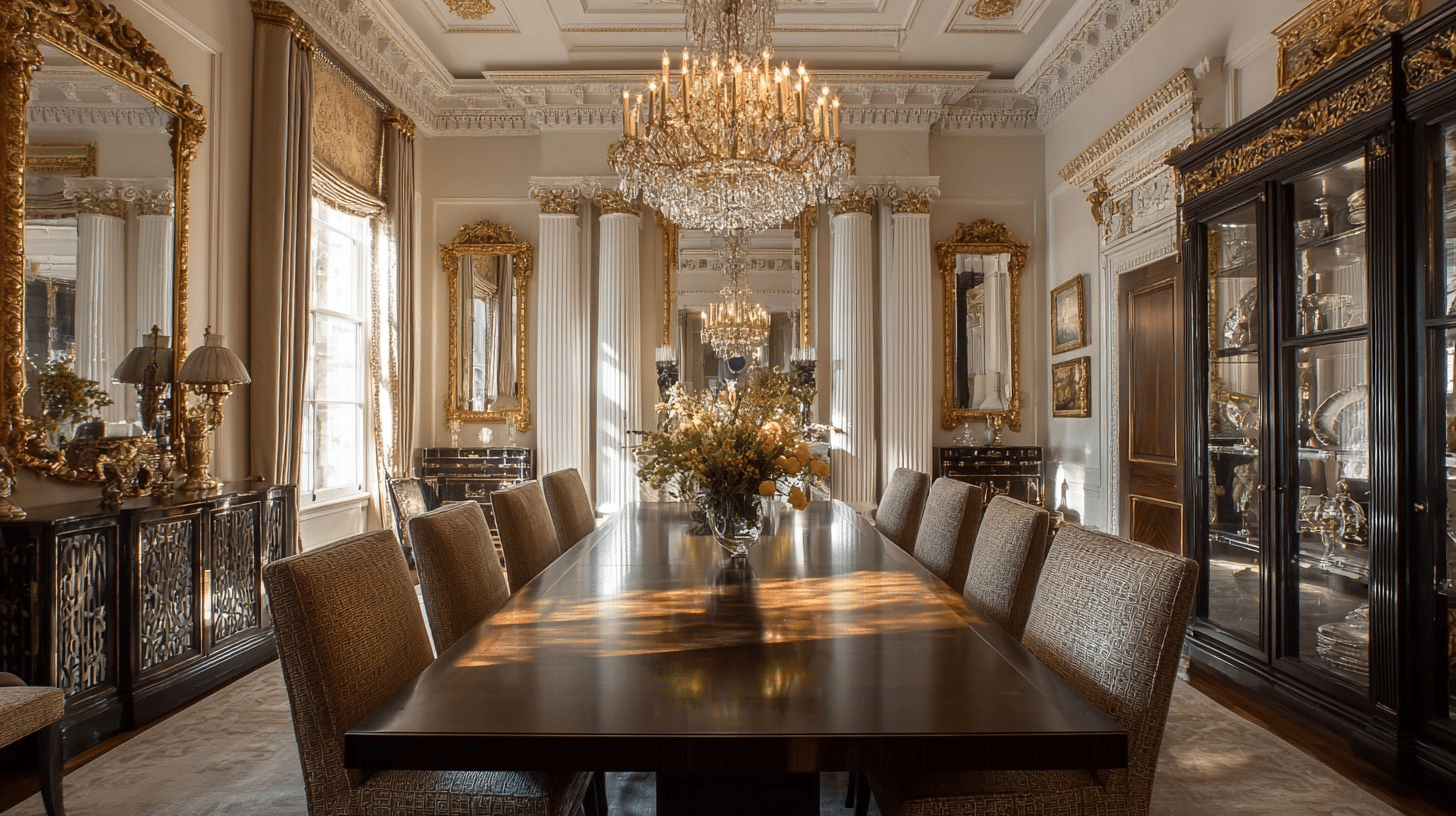
Select a table with straight legs and simple lines. Dark mahogany or walnut works best. Avoid carved or decorative bases. Keep the surface polished and smooth.
13. Arrange Matching Chairs with Upholstered Seats
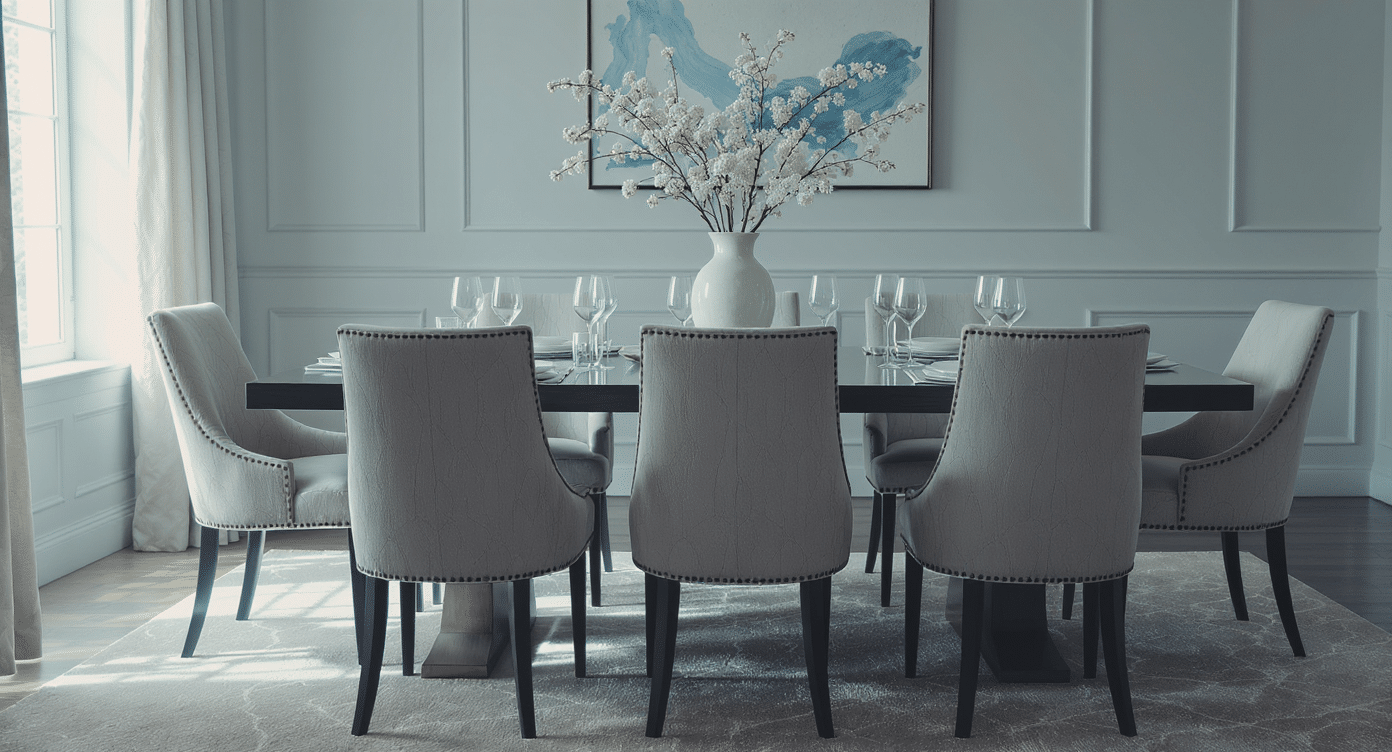
Choose chairs with straight backs and tapered legs. Upholster seats in neutral fabric or leather. Place them evenly around the table. Consider armchairs at each end.
14. Display China in a Classical Cabinet
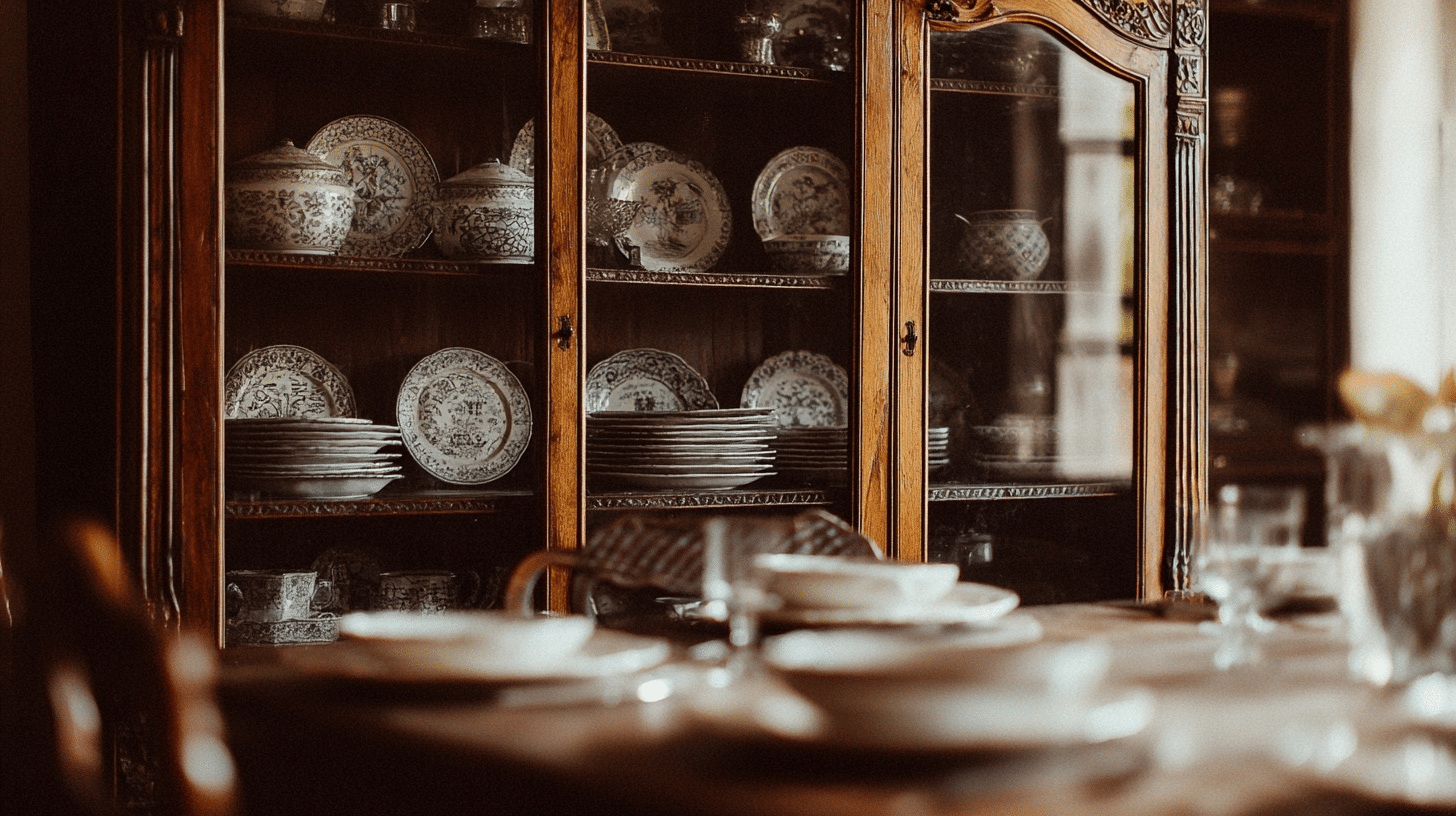
Use a sideboard or china cabinet with glass doors. Arrange dishes and glassware symmetrically. Choose pieces with subtle decoration. Keep the display neat and organized.
15. Add Large Mirrors with Gilded Frames
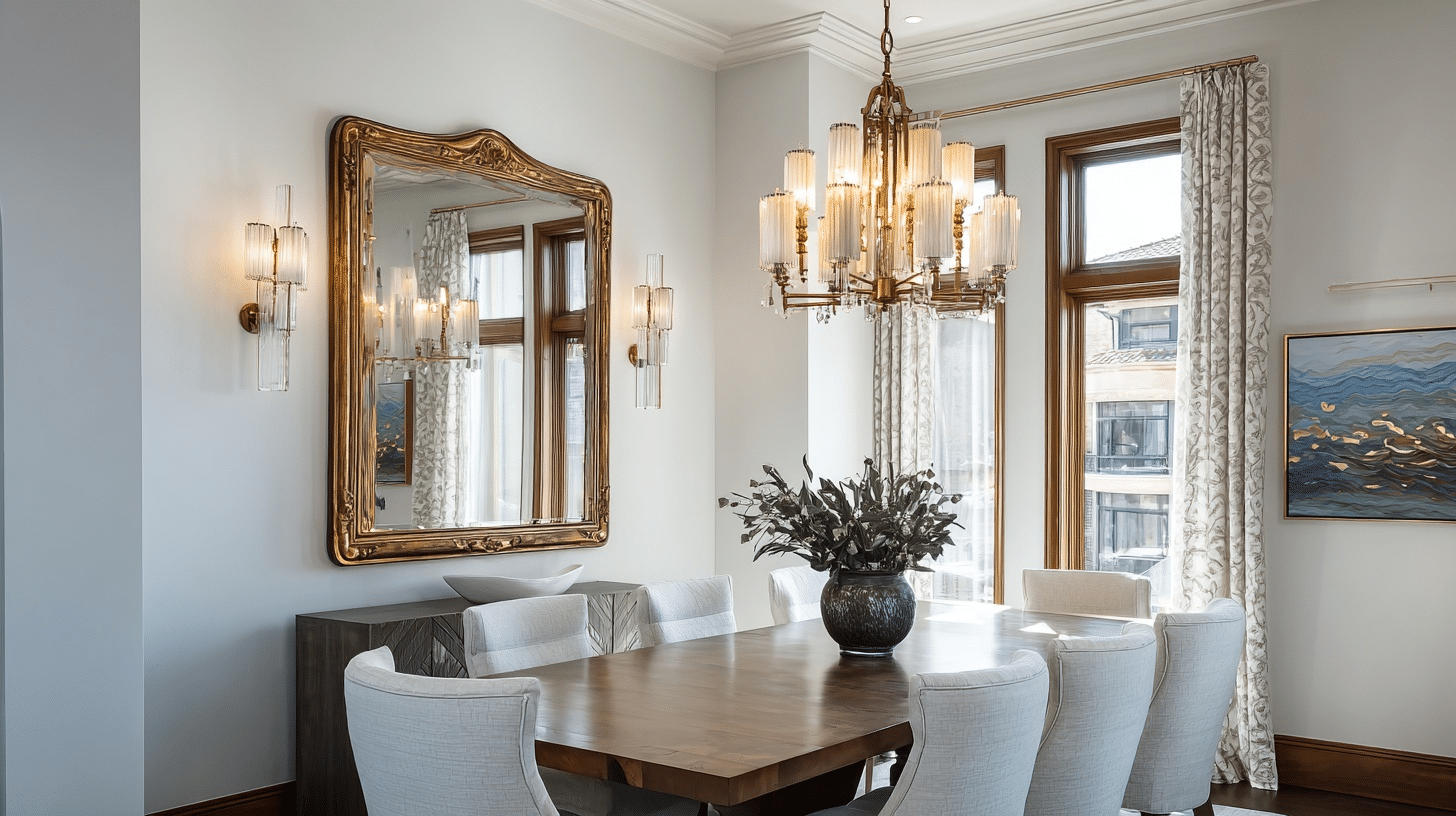
Hang a mirror on the main wall to reflect light. Choose a rectangular frame with gold detailing. Position it at eye level. This makes the room feel larger and brighter.
Entryway
The entryway makes the first impression with a Neoclassical style. It introduces visitors to the home’s graceful character.
16. Install a Statement Console Table
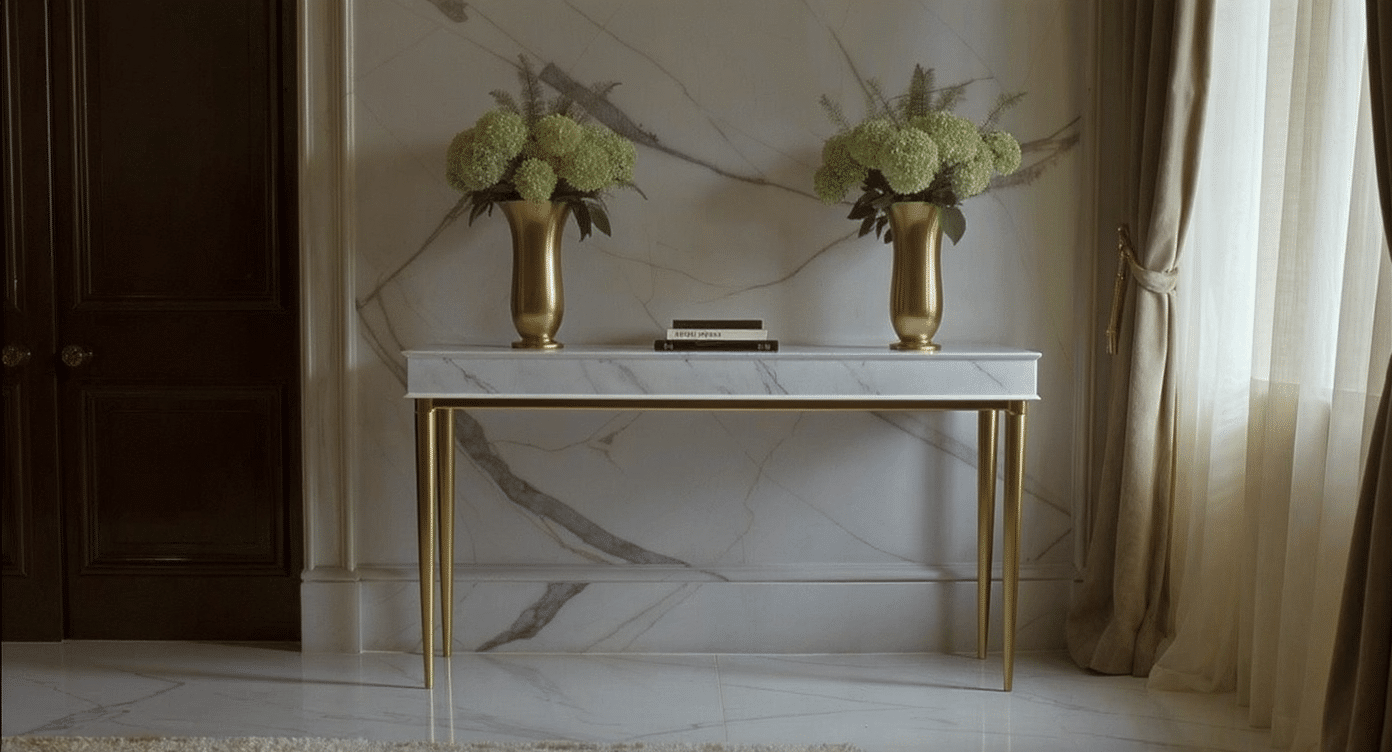
Place a marble-topped console against the main wall. Choose one with slender legs and classical proportions. Keep the surface mostly clear. Add a single decorative object or flower arrangement.
17. Add Symmetrical Wall Sconces
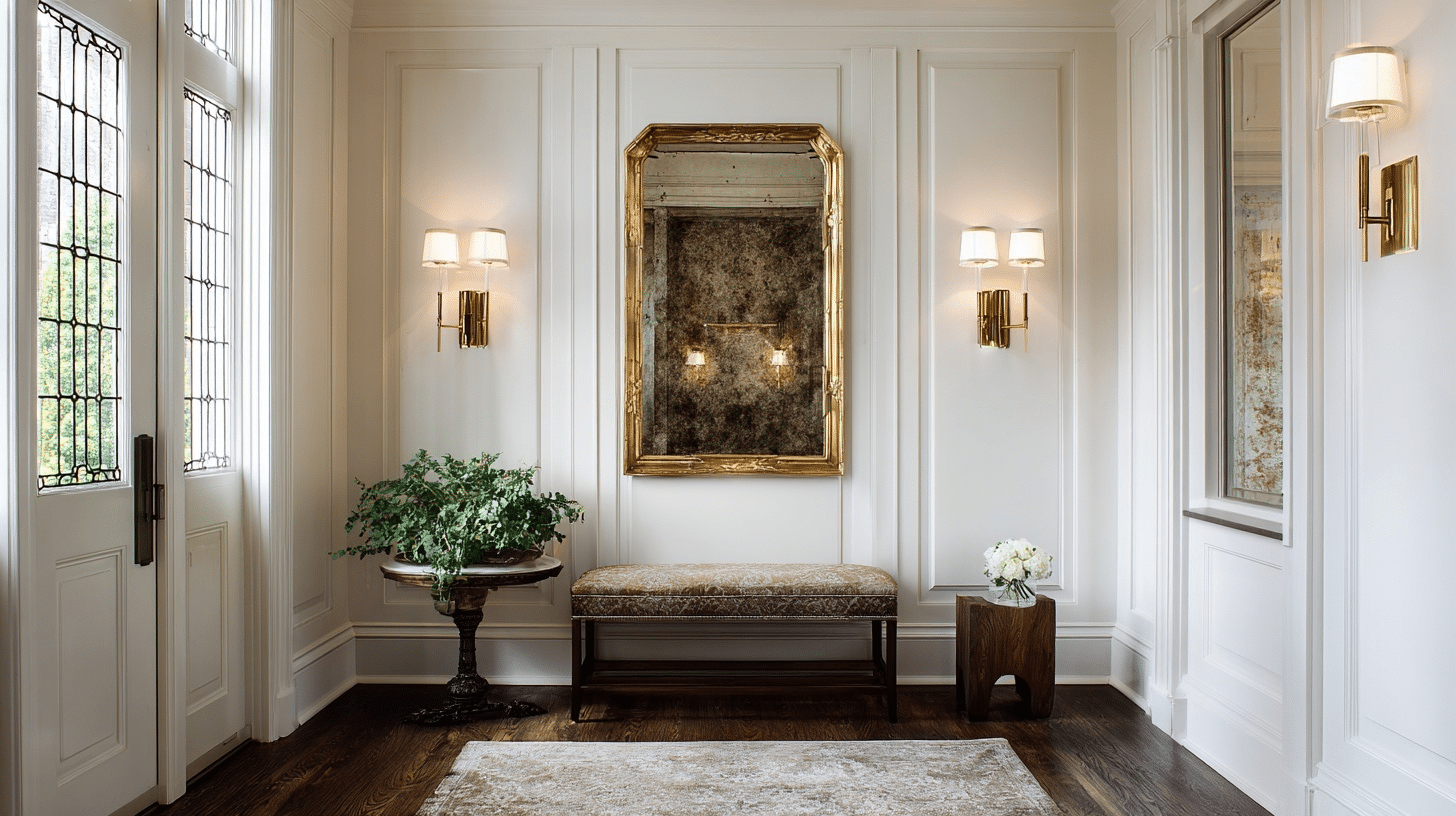
Mount matching sconces on either side of a mirror. Choose brass or bronze fixtures with simple designs. Position them at the same height. This creates balanced illumination.
18. Use Black and White Floor Tiles
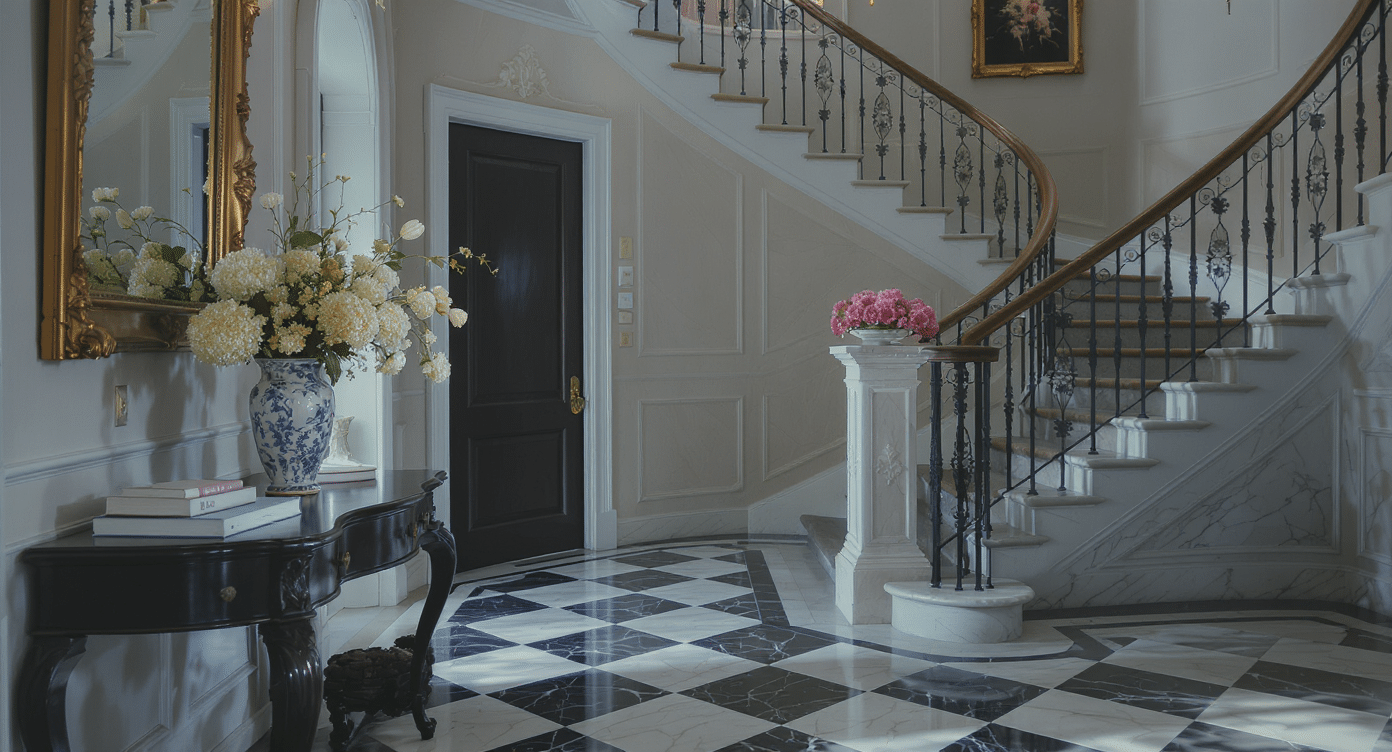
Install a checkerboard pattern or geometric design. Choose marble or ceramic tiles. Keep the pattern regular and straightforward. This creates a classic foundation.
19. Hang a Round or Rectangular Mirror
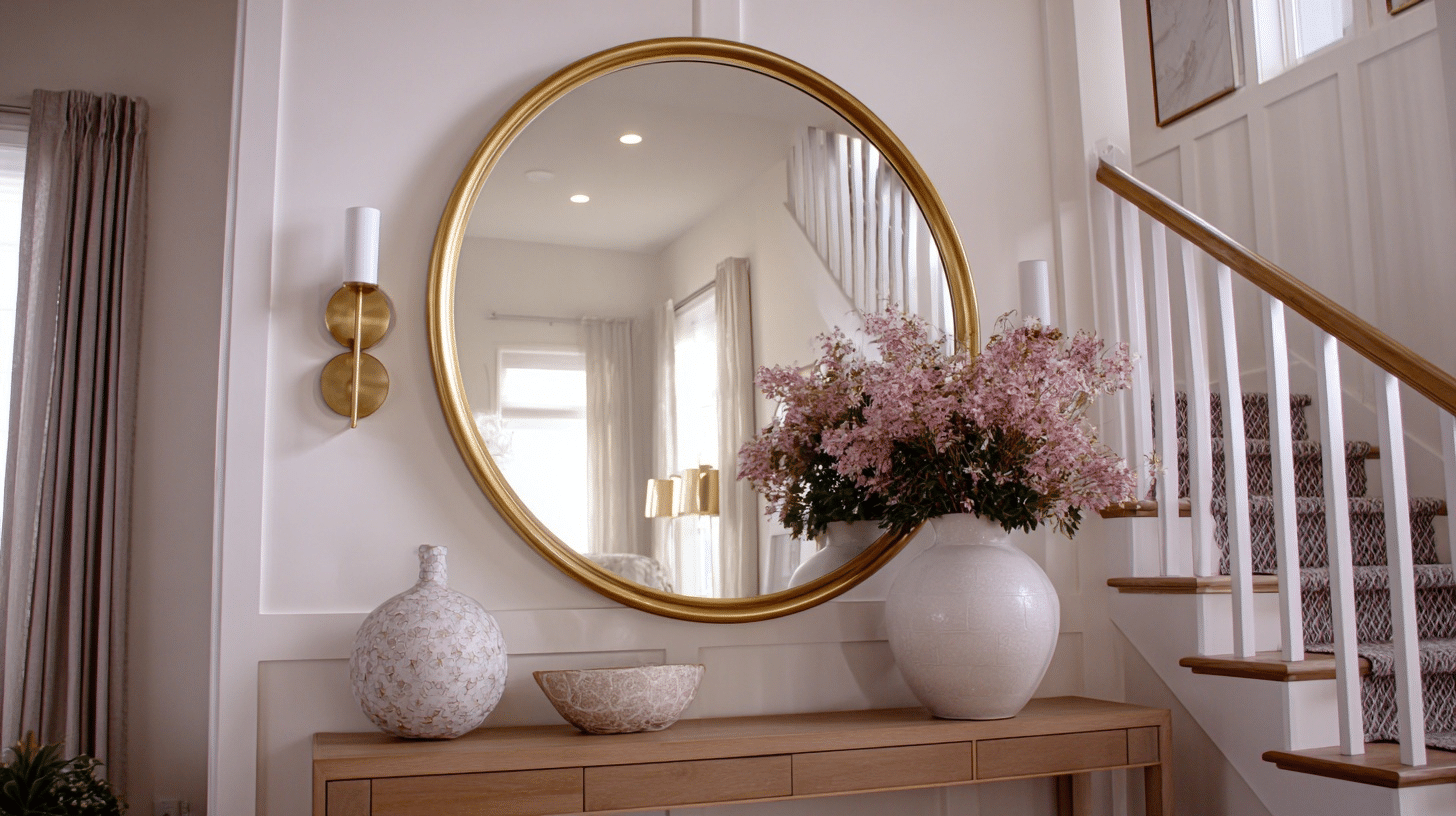
Mount a large mirror to reflect light and space. Frame it in gold or dark wood. Center it above the console table. Ensure it’s proportional to the wall.
20. Place a Classical Bench or Pair of Chairs
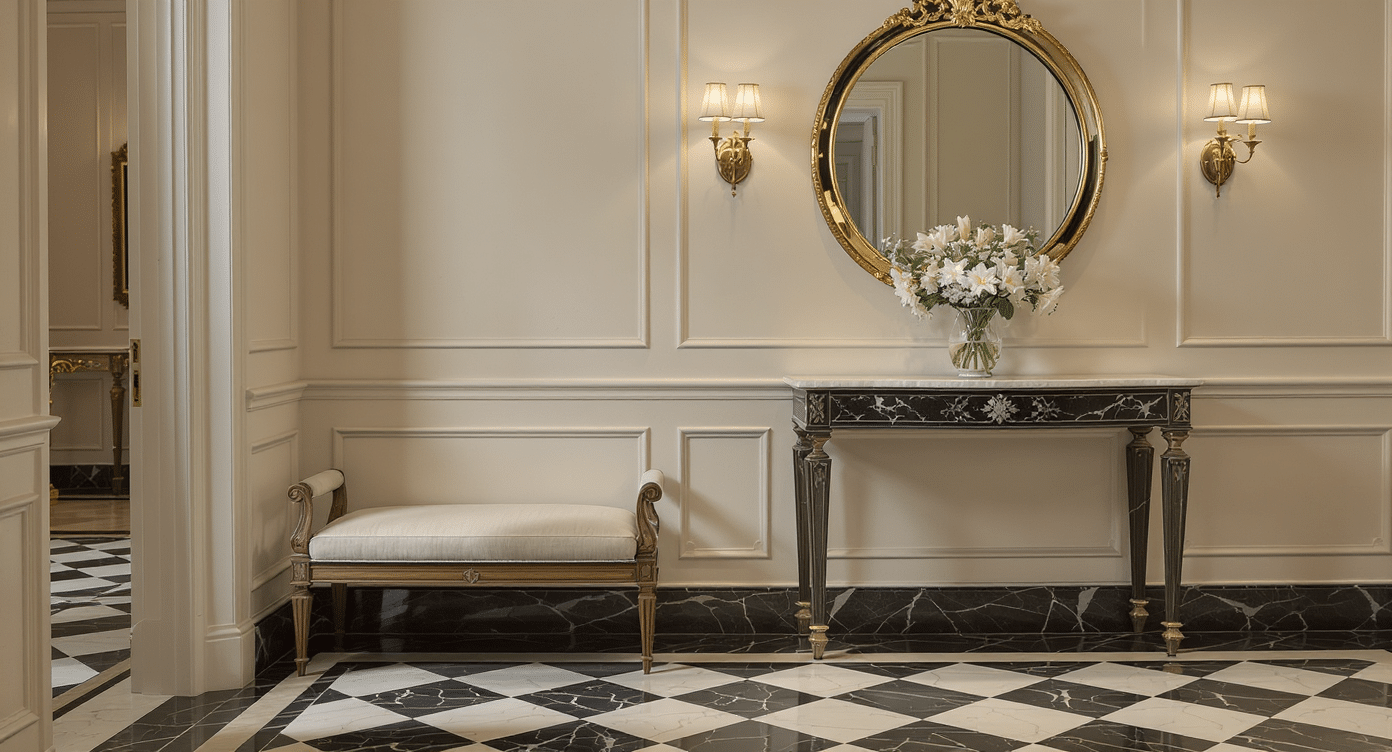
Add seating with straight lines and upholstered seats. Position pieces symmetrically if using two chairs. Keep the scale appropriate for the space. This provides function and style.
Common Mistakes to Avoid and Pro Tips
Neoclassical interior design requires careful attention to detail and proportion. Minor missteps can disrupt the balance of the space.
Here are key mistakes to avoid and professional tips to get it right.
- Don’t Mix Too Many Design Styles – Stick to Neoclassical elements throughout the space. Mixing modern and bohemian pieces can create visual confusion. Keep furniture and decor consistent with classical principles.
- Avoid Overcrowding Rooms with Furniture – Less is more in Neoclassical design. Too many pieces can make a room feel cluttered. Leave open space for the eye to rest.
- Never Skip Symmetry – Asymmetrical arrangements break the classical balance. Always pair items and center focal pieces.
- Don’t Use Cheap Materials – Quality matters in this style. Plastic or synthetic finishes look out of place. Invest in real wood, marble, and natural fabrics.
- Avoid Heavy Patterns and Bright Colors – Bold prints clash with Neoclassical restraint. Stick to solid colors or subtle geometric patterns. Keep the palette neutral and calm.
Wrapping it Up
In summary, Neoclassical interior design provides a structured approach to creating spaces that reflect classical ideals through measured symmetry and intricate craftsmanship.
It draws on ancient inspirations to build environments rich in proportion and quiet complexity, where every element serves the whole.
To bring this vision alive, choose a space to refresh, incorporate classic pieces such as marble accents or velvet upholstery, and observe the resulting clarity.
Which room are you re-decorating first?

